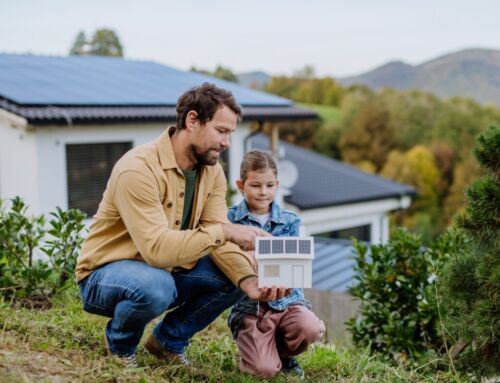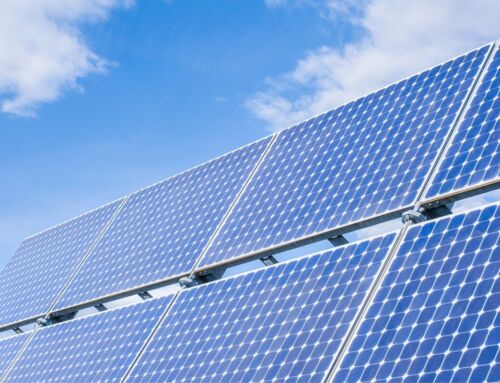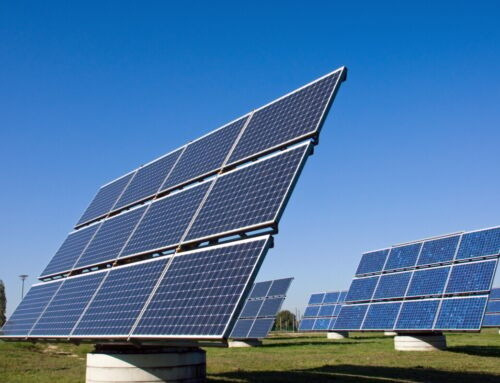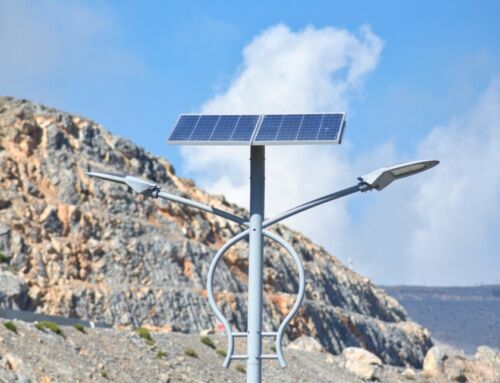Essential Solar Installation Parts Guide
Understanding the Core Components of Solar Installation
Embarking on a solar energy journey is an exciting venture, but understanding the essential solar installation parts is crucial for a successful setup. These components not only determine the efficiency of your solar system but also its longevity and performance. By familiarizing yourself with these parts, you can make informed decisions and ensure your solar installation meets your energy needs effectively.
Key Solar Installation Parts
- Solar Panels: These are the heart of your solar system, capturing sunlight and converting it into electricity. Choosing high-quality panels is vital for maximizing energy production.
- Inverter: This component converts the direct current (DC) generated by the panels into alternating current (AC), which powers your home. Opt for a reliable inverter to ensure smooth energy conversion.
- Mounting System: This secures the panels to your roof or ground, ensuring stability and optimal sun exposure.
A robust mounting system is essential for the safety and efficiency of your installation. Understanding these core components not only enhances your knowledge but also empowers you to optimize your solar installation parts. By selecting the right parts, you can improve your system’s efficiency, reduce energy costs, and contribute to a sustainable future. Transitioning to solar energy becomes a seamless process when you know what each component brings to the table.
How Do Solar Panels Convert Sunlight into Energy?
Understanding the essential solar installation parts is crucial for anyone considering harnessing the sun’s power. These components work together to transform sunlight into usable energy, making them indispensable for a successful solar setup. Knowing how these parts function not only helps in making informed decisions but also ensures optimal performance and longevity of your solar system.
Solar panels are the heart of any solar installation, capturing sunlight and converting it into electricity. This process begins with photovoltaic (PV) cells, which are made from semiconductor materials like silicon. When sunlight hits these cells, it excites electrons, creating an electric current. This direct current (DC) is then converted into alternating current (AC) by an inverter, making it suitable for home use.
Key Solar Installation Parts
- Inverter: Converts DC to AC, enabling the electricity generated to power your home.
- Mounting System: Secures solar panels to your roof or ground, ensuring stability and optimal sun exposure.
- Battery Storage: Stores excess energy for use during cloudy days or at night, enhancing energy independence. Each of these parts plays a vital role in the efficiency and effectiveness of your solar energy system, making them essential to understand and choose wisely.
Inverters: The Heart of Your Solar Power System
In the world of solar energy, understanding the essential solar installation parts is crucial for anyone looking to harness the power of the sun efficiently. Among these components, inverters play a pivotal role, acting as the heart of your solar power system. They are responsible for converting the direct current (DC) electricity generated by your solar panels into alternating current (AC) electricity, which is used by most household appliances. Without a reliable inverter, your solar installation parts would be incomplete, and your system wouldn’t function effectively.
Inverters: The Heart of Your Solar Power System
Inverters are indispensable in any solar setup, ensuring that the energy harvested from the sun is usable in your home. There are several types of inverters, each with unique features and benefits. Understanding these can help you make informed decisions about your solar installation parts.
Types of Inverters
- String Inverters: Ideal for residential setups, these inverters are cost-effective and easy to maintain.
- Microinverters: Attached to each solar panel, they optimize the performance of individual panels, making them suitable for complex roof designs.
- Hybrid Inverters: These offer the flexibility of integrating battery storage, providing energy security during power outages.
Choosing the right inverter is crucial for maximizing the efficiency of your solar power system. When selecting an inverter, consider factors such as the size of your solar array, your energy consumption patterns, and potential future expansions. By understanding these essential solar installation parts, you can ensure your solar power system is not only efficient but also tailored to meet your specific energy needs. This knowledge empowers you to make smart choices that enhance the sustainability and reliability of your solar investment.
Why Mounting Systems Matter in Solar Installations
In the realm of solar energy, understanding the essential solar installation parts is crucial for anyone looking to harness the power of the sun efficiently. Among these components, mounting systems play a pivotal role. They are not just about holding the solar panels in place; they ensure the panels are positioned optimally to capture maximum sunlight, which directly impacts the energy output and efficiency of the entire solar system. Without a robust and well-designed mounting system, even the most advanced solar panels can underperform, making it a critical consideration for any solar installation project.
Stability and Durability
- Ensures Longevity: A well-constructed mounting system provides the necessary support to withstand various weather conditions, ensuring the solar panels remain secure and functional over time.
- Material Quality: High-quality materials like aluminum or stainless steel are often used to prevent corrosion and enhance durability.
Optimal Positioning
- Maximizes Sun Exposure: Properly installed mounting systems allow for the adjustment of panel angles, optimizing exposure to sunlight throughout the year.
- Reduces Shading: By elevating panels, these systems help minimize shading from nearby objects, thus maximizing energy production.
Read More: What Are the Must-Have Components for Solar Electric Systems?
The Role of Batteries in Storing Solar Energy
In the world of renewable energy, understanding the essential solar installation parts is crucial for anyone looking to harness the power of the sun effectively. Among these components, batteries play a pivotal role in storing solar energy, ensuring that your solar power system can provide electricity even when the sun isn’t shining. This capability is vital for maintaining a consistent energy supply, especially during nighttime or cloudy days, making batteries an indispensable part of any solar setup. Batteries are the backbone of solar energy storage, allowing you to capture excess energy produced during peak sunlight hours and use it when needed. This not only maximizes the efficiency of your solar installation parts but also enhances energy independence.

Ready to take the next step? Discover how solar energy can elevate your home and reduce those energy bills. Request a Free Solar Estimate at NEW SOLAR QUOTE
Key Benefits of Solar Batteries
- Energy Availability: Store surplus energy for use during non-sunny periods.
- Cost Savings: Reduce reliance on grid electricity, lowering utility bills.
- Energy Security: Provide backup power during outages, ensuring uninterrupted energy supply. By integrating batteries into your solar system, you can optimize energy usage, reduce costs, and increase the resilience of your energy supply. This makes them a smart investment for anyone serious about sustainable living.
What Are Charge Controllers and Why Are They Important?
Solar energy systems are becoming increasingly popular as more people seek sustainable and cost-effective energy solutions. Understanding essential solar installation parts is crucial for anyone considering or maintaining a solar setup. One key component that often gets overlooked is the charge controller. This device plays a pivotal role in ensuring your solar panels and batteries work harmoniously, optimizing energy efficiency and prolonging the lifespan of your system. Charge controllers are vital in solar installations as they regulate the voltage and current coming from the solar panels to the batteries. Without them, batteries could overcharge, leading to damage or reduced lifespan.
Key Functions of Charge Controllers
- Voltage Regulation: Ensures batteries receive the correct voltage, preventing overcharging.
- Battery Protection: Safeguards against over-discharge, which can harm battery health.
- System Efficiency: Enhances overall system performance by maintaining optimal charge levels. Incorporating a charge controller into your solar installation parts not only protects your investment but also maximizes energy output, making it an indispensable component of any solar energy system.
How NewSolarQuote Simplifies Your Solar Installation Journey
Understanding the essential solar installation parts is crucial for anyone looking to harness the power of the sun efficiently. These components not only ensure your system’s optimal performance but also its longevity. At NewSolarQuote, we simplify your solar installation journey by providing comprehensive guidance and top-quality parts tailored to your specific needs. Whether you’re a seasoned installer or a DIY enthusiast, knowing the right parts can make all the difference in your solar setup’s success.
Key Components to Consider
- Solar Panels: The heart of your system, converting sunlight into electricity.
- Inverters: Essential for transforming DC power from the panels into AC power for home use.
- Mounting Systems: Securely attach panels to your roof or ground, ensuring stability and efficiency.
- Batteries: Store excess energy for use when the sun isn’t shining, enhancing energy independence.
- Charge Controllers: Protect your batteries from overcharging, extending their lifespan. By focusing on these critical solar installation parts, NewSolarQuote ensures you have everything you need for a seamless transition to solar energy. With our expert advice and quality products, your journey to sustainable energy is both simplified and successful.
Choosing the Right Cables and Connectors for Your Solar Setup
In the realm of solar energy, understanding essential solar installation parts is crucial for a successful setup. Among these components, cables and connectors play a pivotal role in ensuring your solar system operates efficiently and safely. Choosing the right ones can significantly impact the performance and longevity of your solar installation, making it imperative to get it right from the start.
Understanding Cable Types
Selecting the appropriate cables is vital for minimizing energy loss and ensuring safety.
Solar cables are specifically designed to withstand harsh environmental conditions, including UV exposure and temperature fluctuations. Look for cables that are rated for outdoor use and have the appropriate gauge to handle the current load of your system. This ensures that your solar installation parts are not only efficient but also durable.
Connector Compatibility and Quality
Connectors are the unsung heroes of solar installations, providing the necessary links between panels, inverters, and batteries. It’s essential to choose connectors that are compatible with your specific solar components to avoid any potential mismatches. Opt for high-quality connectors that offer secure, weather-resistant connections to prevent energy loss and ensure the longevity of your system. By focusing on these details, you can enhance the overall efficiency and reliability of your solar setup.
Take action today! Save money and protect the planet by going solar. Schedule your no-cost consultation now. Book Your Free Consultation at NEW SOLAR QUOTE
Want to see all your options? Head to FREE SOLAR QUOTES for a closer look at our solar offers.





